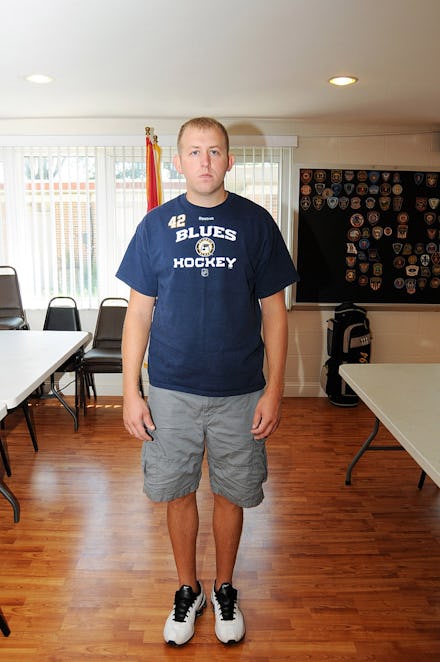7 Times We Decided People of Color Don't Feel Pain Like White People Do

Pain is universal. Everyone feels it at some point. But somewhere in the course of history, the world decided that people of color feel less pain than white people.
This wasn't a conscious decision per se. In the U.S., it happened when slavery was in full swing, and Americans needed to explain why systematically whipping, raping and treating an entire race of people like chattel was OK under the Constitution. One solution was to make black people subhuman by law. So logically, as subhumans, their response to everyday stimuli was simply different than those of "normal" (white) people.
Thus, a stereotype was born: "Blacks were just made differently." But it shouldn't surprise us that people thought this way when the Three-Fifths Compromise passed in 1787. What should surprise us is that some still believe it today. And not just about black people: The ways they respond to pain in women, Latinos and other groups imply the persistence of stereotypes that aren't just lies — they influence how we allocate resources and enforce laws as well.
Examples of this abound, crossing national borders and racial boundaries. Here are seven times the world decided that people of color don't feel pain the same way as white people do.
1. That time scientists stuck needles into black people and no one cared.
As part of a study, researchers at the University of Milano-Bicocca in Italy showed a multiracial group of subjects video of a needle piercing a black person's skin. Next, they showed another needle piercing a white person's. Slate reported in 2013 that all of the subjects responded with more empathy — measured through their physiological reactions — to the white skin than the black skin. This phenomenon is known as the "racial empathy gap."
2. That time a white lady said Latino kids shouldn't get air conditioning.
At a meeting to determine whether a predominantly white school or a predominantly Latino school would get air conditioning — a grim meeting, presumably — Martinez, California Unified School District board member Denise Elsken argued that the white kids should get it, BuzzFeed reports. Why? Because "95%" of the Latino kids didn't have air conditioners in their homes, and would therefore be used to the heat.
3. That time a police officer transformed a black teenager into a superhuman monster.
When Ferguson, Missouri, Officer Darren Wilson recounted how he killed 18-year-old Michael Brown, he described him as a "demon." Via the New Yorker:
"The only way I can describe it, it looks like a demon, that's how angry he looked."
He also cashed in on the stereotype of the superstrong, hyper-violent black male by implying Brown was somehow impervious to bullets (via the New Yorker):
"At this point I start backpedalling and again, I tell him to get on the ground, get on the ground, he doesn't. I shoot another round of shots. Again, I don't recall how many it was or if I hit him every time. I know at least once because he flinched again."
4. That time white people thought black people were actually magical.
Researchers from Northwestern University and the University of Virginia presented subjects with a series of scenarios. They included questions around who would be more likely to have "superhuman skin" that "can withstand the pain of burning hot coals," to survive "a fall from an airplane" and to be "capable of lifting up a tank" — a black person or a white person.
Respondents picked the black person in almost every scenario, an example of "superhumanization bias" linked to "decreased perception of pain in black people," according to Mic.
5. That time doctors gave less pain medicine to black kids.
ABC News reported that black children are both more likely to spend a longer time in the ER waiting room before being treated than white kids, and 39% less likely to be given pain medication in similar situations.
6. That time a black woman needed help but got shot instead.
In a Time magazine op-ed, Noliwe M. Rooks writes about the murder of Renisha McBride, a black woman in Michigan who tried to find help when her car broke down but ended up being shot by the man who answered the door she knocked on. Rooks situates this hair-trigger reaction within the stereotype of the black woman as "threatening." She also links it to a history of black women getting far harsher punishments than white women — and even men — for breaking the law at the turn of the last century.
Via Time:
"They were thrown in city convict camps, whipped and forced to pave local streets for things like cursing in public ... it was rare for white women to even be prosecuted for such crimes."
7. That time doctors gave black people less treatment for chronic pain.
According to NBC News, a study of the University of Michigan health system revealed that black chronic pain patients were "prescribed fewer pain medications that whites." The report also states that, "on average, a minority pain patient would be prescribed 1.8 pain medications compared to 2.6 drugs for non-minority sufferers."